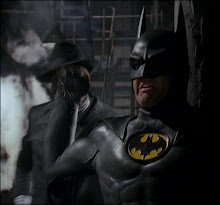In Land of the Blacks, Part 1, we very briefly reviewed Sudanese history, and provided the background leading up to the referendum that led to South Sudan's independence. Reviewing this post today, I discovered that the links to embed an audio and a video no longer function. There is now a link to take you to the video, and I am looking for a replacement for the embedded audio.
In Land of the Blacks, Part 2, we reviewed expert testimony before Congress to get an idea of how Bashir's regime in Khartoum operates. In particular, we saw how Bashir lets militias do his dirty work, supporting them by airstrikes which serve little military purpose, but which terrorize the civilian villages and refugee camps. We also saw how International Criminal Court Prosecutor Luis Moreno-Ocampo said Bashir invents conflict to create a better negotiating position, and heard of allegations that Bashir was embezzling billions of dollars of oil money.
In Land of the Blacks, Part 3 we heard of violence leading up to the January, 2011, plebiscite on independence, considered how oil would become a key issue, and noticed that 20% of Sudan's civil service were southerners.
These first three parts were published on January 8, 2011. Land of the Blacks, Part 4 came out on June 6, 2011, and in it we considered the oil from Abyei and the Unity oilfield, and saw how hostilities were already breaking out around Abyei. Governor Taban Deng Gai of Unity State was quoted as stating that there already existed a de facto state of war. And, we put it together: Bashir was using proxy militias backed by his airpower to drive tribes hostile to his rule out of disputed areas, with the goal of moving his own people in. He obviously sought de facto control of disputed areas, which could later be legitimized through votes for "self-determination".
By Land of the Blacks, Part 5, we were considering the mechanics of the hostilities, especially the background of Ahmad Muhammad Harun, and ICC-indicted war criminal whom Bashir had named governor of Southern Kordofan. We came to the conclusion that Bashir had been planning this fight for more than two years, and had been getting his assets (people, militias, military units) in place. And, we saw how, in testimony before Congress, Congresswoman Ros-Lehtinen, chairman of the House Committee on Foreign Affairs, pointed out that President Obama was following the same flawed policy relative to Sudan and Bashir that Obama had criticized in 2008.
By this point, it was obvious to me a war was breaking out, so I began the next series on Sudan, entitled The Inter-Sudan War, in June; the title was chosen because the war was obviously beginning along the poorly-defined border between the Republic of Sudan ("rump" Sudan, the north) and the other Sudanese daughter country, the Republic of South Sudan. In The Inter-Sudan War, Part 1, we considered how easy it would be for Bashir to attain his goals in the absence of an effective international response, and we also saw how easy an effective international response could be, given the political will to confront this indicted war criminal.
The Inter-Sudan War, Part 2 outlined Bashir's emerging ethnic cleansing of his border areas, and drew parallels with the genocide in Rwanda. We also pointed out a general regional trend of secular dictators and infidels being targeted by Islamic militants, and how Obama was always either doing nothing, or supporting the Islamic militants.
The Inter-Sudan War, Part 3 provided more information to support the contention that it was not merely a question of ethnic cleansing, but of Islamic militants doing exactly what Bashir had promised would happen in the event the South seceded: turn the North into an Islamic state governed by sharia law.
It was only this month that The Inter-Sudan War, Part 4 pointed out the conflict was really beginning to heat up, not just with militias terrorizing civilians, but with troops from North and South fighting it out, and in The Inter-Sudan War, Part 5 we considered the political and economic aspects of this fight, and saw how the heavier fighting was sparked by an incursion by Northern troops, which was met by Southern forces pursuing them northward in "hot pursuit" - a "hot pursuit" denounced by the international community, resulting in South Sudan's President Kiir withdrawing those troops, but then facing some domestic pressure as a result.
So, we saw how a war was developing while the rest of the world hoped for peace. Then, we saw how the war was breaking out, while the rest of the world thought it was merely a possibility.
Now, we will begin a new series, entitled Victory Is Ours, in which we will examine how Bashir is winning, while the rest of the world is beginning to realize a war is actually being fought.
Subscribe to:
Post Comments (Atom)






No comments:
Post a Comment